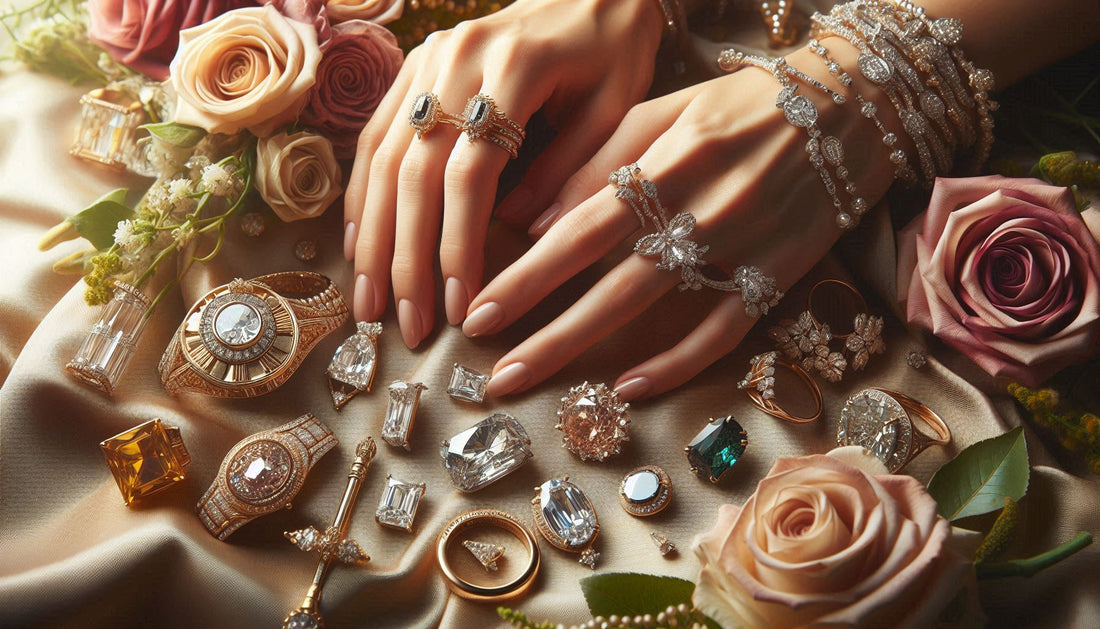
Fine jewelry has always been more than just a fashion statement—it's a tangible investment in beauty, craftsmanship, and lasting value. Among the most coveted items in the world of fine jewelry are natural diamonds. Despite recent fluctuations in pricing due to the rising popularity of lab-grown diamonds, natural diamonds remain a valuable and timeless investment. In this article, we’ll explore why investing in natural diamonds and fine diamond jewelry can be a wise decision for the long term.
The Appeal of Natural Diamonds
Natural diamonds have long been symbols of wealth, status, and enduring love. Formed over billions of years deep within the Earth, each natural diamond is unique, possessing a history and allure that cannot be replicated. This rarity is one of the primary reasons natural diamonds hold their value over time.
While lab-grown diamonds have made a splash in the jewelry market, offering consumers a more affordable and ethically conscious option, they lack the historical and intrinsic value of natural diamonds. Lab-grown diamonds are created in a controlled environment, often within weeks, which contrasts starkly with the natural geological processes that give natural diamonds their extraordinary appeal.
Differences Between Natural and Lab-Grown Diamonds
At a glance, lab-grown and natural diamonds may appear identical. Both are composed of carbon and share similar physical properties, making them difficult to distinguish without specialized equipment. However, there are key differences that investors should consider.
1. Origin and Rarity: Natural diamonds are formed through natural processes over billions of years, making them rare and valuable. Lab-grown diamonds, on the other hand, are mass-produced, reducing their rarity and, consequently, their long-term value.
2. Market Perception: Natural diamonds have long been perceived as luxury items, and this perception continues to drive their market value. Lab-grown diamonds, though appealing for their lower cost, often lack the same prestige in the eyes of collectors and investors.
3. Resale Value: Natural diamonds tend to retain and even appreciate in value over time, making them a strong long-term investment. Lab-grown diamonds, due to their lower cost and growing availability, may not hold their value as well on the resale market.
The Investment Potential of Natural Diamonds
Investing in natural diamonds offers several advantages. First, their intrinsic value often increases with time. As natural resources become scarcer, the rarity of natural diamonds is expected to rise, which can lead to higher market prices.
Second, natural diamonds have a proven track record of being a stable asset. Unlike stocks or cryptocurrencies, diamonds are tangible and unaffected by market volatility. Their value is more resistant to economic fluctuations, making them a safe haven for wealth preservation.
Finally, natural diamonds are not just financial assets; they are also emotional investments. Owning a piece of fine diamond jewelry provides not only financial security but also aesthetic and sentimental value. The combination of beauty, rarity, and enduring value makes natural diamonds an attractive investment option.
Conclusion: Why Invest in Natural Diamonds?
While lab-grown diamonds may offer a cost-effective alternative for those seeking the appearance of luxury, natural diamonds continue to be the preferred choice for investors looking for long-term value. Their rarity, historical significance, and consistent market performance make them a wise investment. Whether you’re purchasing a stunning diamond necklace or a classic engagement ring, investing in natural diamonds ensures that you’re acquiring a piece of lasting value that can be passed down through generations.
By choosing natural diamonds, you’re not just buying jewelry; you’re investing in a timeless asset that will retain its brilliance and worth for years to come.

